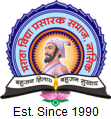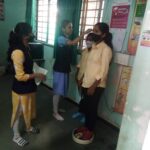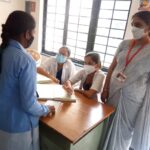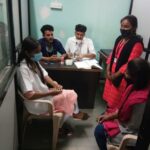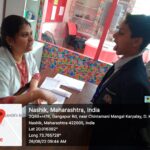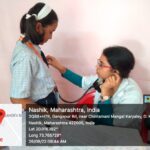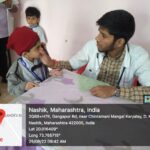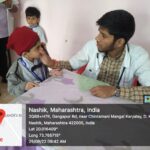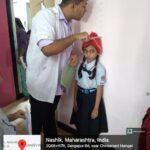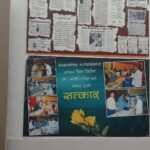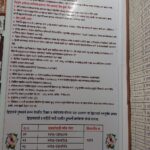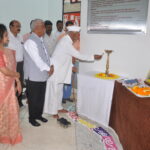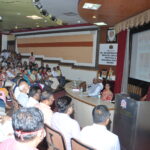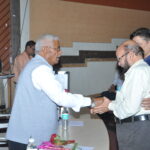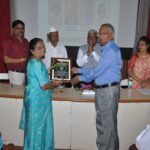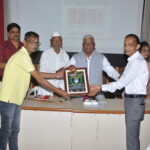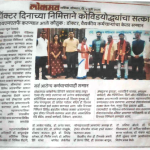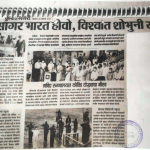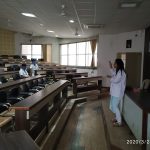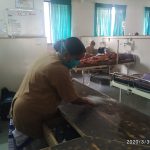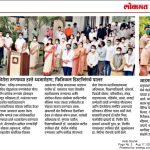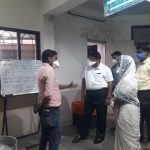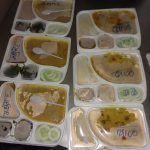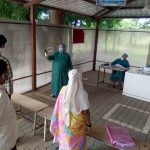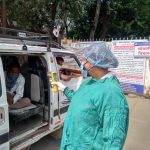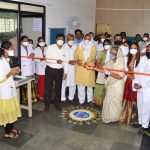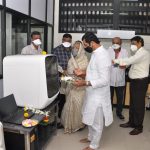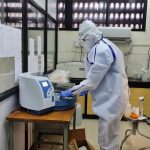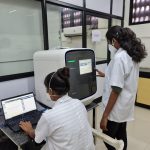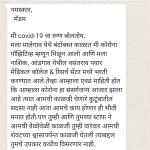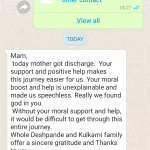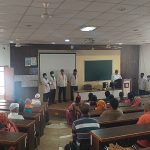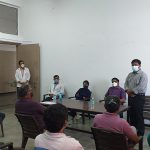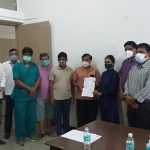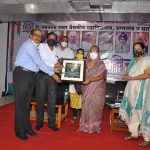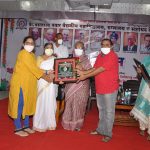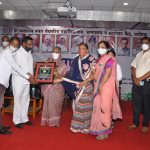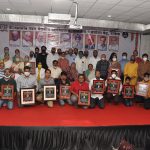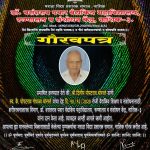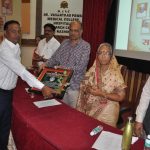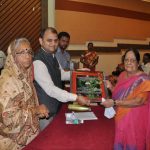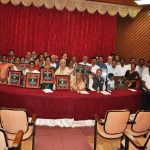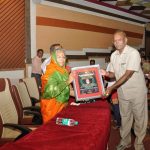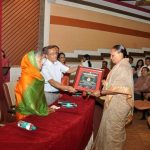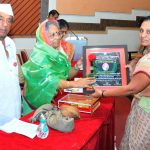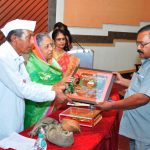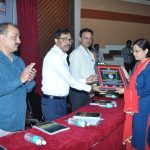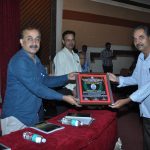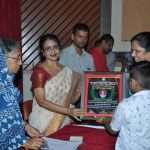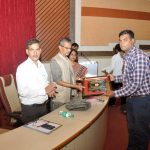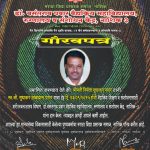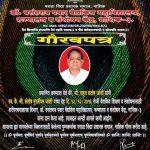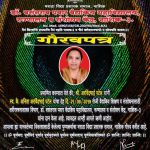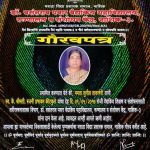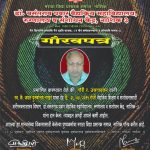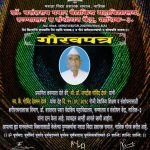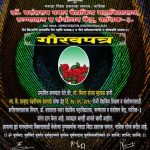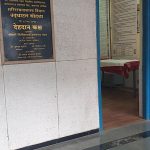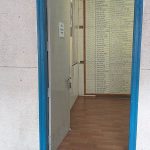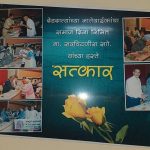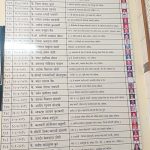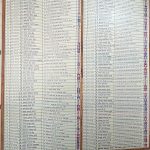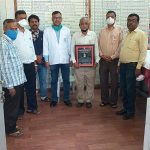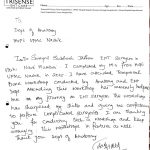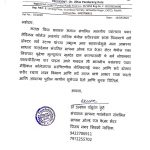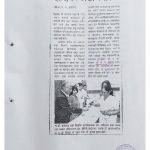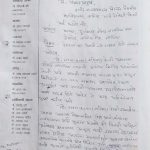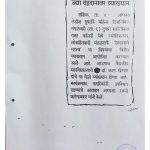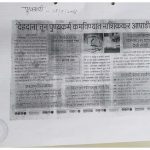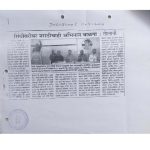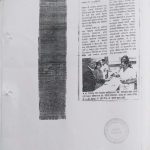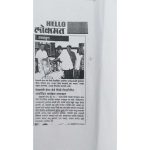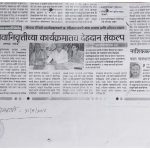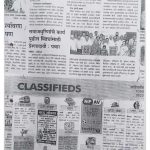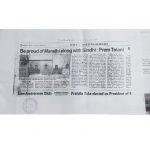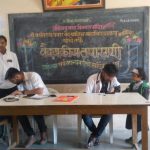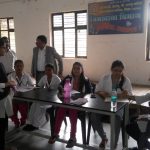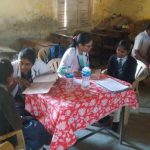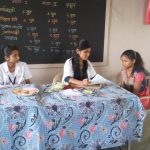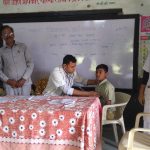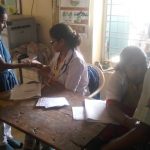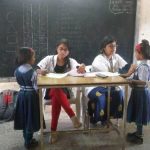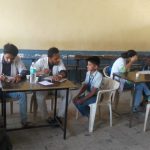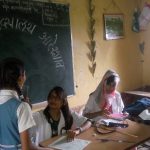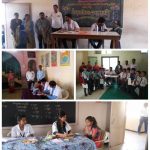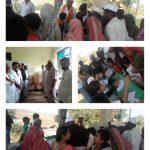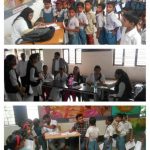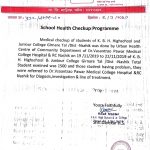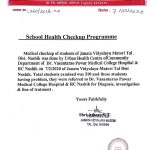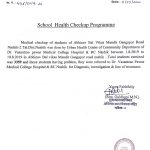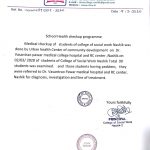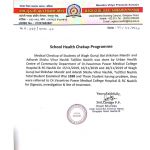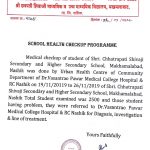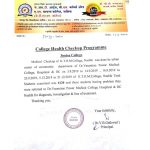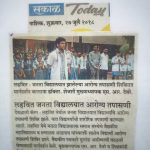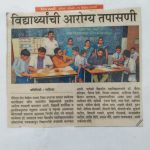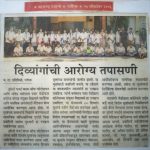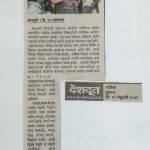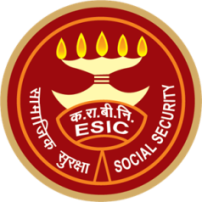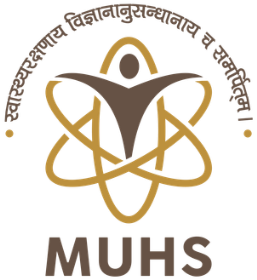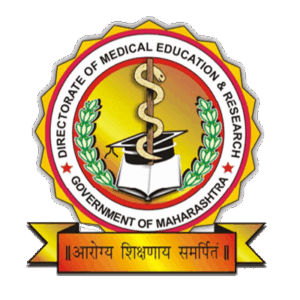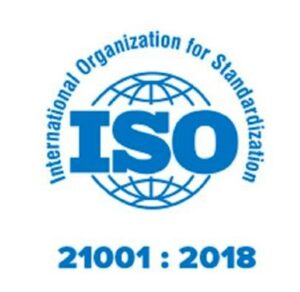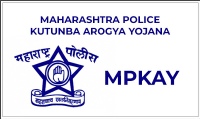Data for 2021-22
BEST PRACTICE – I
Title-1: Annual Health Check-up School/College Students
Objectives:
- To screen various health problems amongst school/college going children.
- To provide prompt treatment and referral to tertiary care centre.
Context: School/College going children suffer from various health problems. Schools serves an ideal platform to impart health education and providing health services.
Practice: Community Medicine team performs school/college health check-up. Schedule of visits are planned for the school/college. Children who need higher treatment are referred to the institute where specialist consultation is given.
Evidence of Success:
| Year | No.of students screened | No.of Referrals |
| 2021-22 | 5444 | 1070 |
- Many un-diagnosed/asymptomatic diseases have been diagnosed early through this activity.
- Appropriate referrals and follow-ups are made to ensure a continuum of service.
Problems Encountered and Resources Required:
Many times medical examination facilities are not available at remote locations.Mobile(van) Medical Unit facility is needed.
BEST PRACTICE – II
Title-2: Body Donation “A Gift of Mankind To Serve Mankind”
Objectives:
- To remove religious misconceptions about rituals of funeral.
- To spread awareness about and encourage body donation in the society.
Practice:
Institute has started body donation program in 1991.Prior registration of body donation donor is required& I-card is issued to donor.After death the relatives of donors to contact us.We provide free ambulance service for accepting the corpse.
Evidence of Success:
| Year | Body Donation Registration | Body Donation |
| 2021-22 | 108 | 42 |
Problems Encountered: Lack of awareness & Hesitations due to religious beliefs towards body donation.
Resources required: Embalming and Storage facility.
Data for 2020-21
BEST PRACTICE – I
Title : COVID-19 Prevention and Management
Objectives of the practice:
- To provide appropriate healthcare to COVID-19 patients
- To minimize the spread of infection among healthcare workers and non-COVID patients.
- To collect, analyze and convey the patient data to national health authorities
Context:
Nashik city witnessed its 1st COVID-19 case in April 2020. Our institute was designated as Dedicated COVID Hospital on 6th May 2020 with an initial bed allocation of 120 which later increased to 265 during the second wave of COVID-19. This included 120 O2 beds and 25 ventilator beds.
Challenges:
Meticulous micro-planning is required for human resource allocation, their trainings, ensuring regular supply of medicines and personal protection equipment, supportive diagnostic services, diet planning, housekeeping services, infection prevention, handling communication with patients and their relatives, data and record keeping, etc
The practice:
- Separate blocks were identified for COVID-19 patients.
- Clinical department faculty and residents and nursing staff were posted in rotation to handle the mild to moderate and severe COVID-19 cases based on their expertise.
- Super specialty, diagnostic, dietary and physiotherapy services were made available under one roof.
- Screening of all visitors, fever OPD, creation of grey zone for suspected patients was done to avoid cross-infections.
- Our institute also established the 1st ICMR and NABL approved laboratory for RT-PCR testing of COVID-19 in Nashik district. Also, 8 peripheral swab collection centres were set up in urban and rural areas for remote population.
- The data of RT-PCR tests, COVID-19 admissions, discharges and deaths was uploaded on national government portals on daily basis.
- Our centre started COVID-19 vaccination in January 2021.
- Also, more than 100 mucormycosis cases were successfully managed during the 2nd
- For smooth co-ordination of all activities and flow of information, various What’s app groups have been created.
- All patient care activities were closely monitored by the college administration and necessary corrective actions were suggested for improvement.
Evidence of success:
- Our institute treated around 4700 COVID-19 cases till 15th Jan 2021 with a cure rate of about 85%.
- More than 1 lac RT-PCR tests were performed in timely and accurate manner.
- With strict vigilance on the infection control practices, infection rate among staff and non-COVID patient was kept to minimum and complete range of non-COVID healthcare services was resumed since as early as June 2020.
- Due to the dedicated COVID-19 healthcare work, our institute and staff got recognition and awards at various levels and a consistent positive feedback from COVID-19 patients and relatives.
Problems Encountered and Resources Required:
During the peak of 1st and 2nd wave, there was difficulty in procuring the essential medicines for COVID-19 and mucormycosis. It was a challenge to manage COVID-19 and non-COVID patients under the same roof and minimizing cross infections. Preparing the duty rotation of staff through non-COVID, COVID and quarantine was a mammoth task.
BEST PRACTICE – II
Title of the practice
BODY DONATION“A Gift of Mankind to Serve Mankind”
Aim
Dispel misconceptions, create awareness and encourage body donation for education in medical institute
Objective of practice
- To understand human anatomy and development of psychomotor skills.
- To remove religious misconceptions about rituals of funeral.
- To spread awareness about and encourage body donation in the society.
The context
In medical colleges, bodies are required for dissection purpose for first year medical students, for specimens and for hands on cadaveric workshops.
The Practice
Department of Anatomy, at our institute has started body donation program in the year 1991. For registration of body donation donor has to fill an application form duly signed by the relatives along with passport size photo and necessary address proof. Acknowledgement is given & I card is issued to donor.
After death the relatives of donors to contact us within 5-6 hours to collect the corpse. We provide free ambulance service for the same. Death certificate in the format of form 4A is mandatory for body donation.
Evidence of Success
| Year | Body donation registration | Body donation |
| 2020-2021 | 69* | 31* |
*Due to COVID-19 Pandemic, number is less.
Problems Encountered
Lack of awareness & Hesitations due to religious beliefs towards body donation.
Resources required
Embalming and Storage facility
Photos:
Data for 2015-2019-
BEST PRACTICE – I
Title of the practice:
BODY DONATION“A Gift of Mankind to Serve Mankind”
Aim:
Dispel misconceptions, create awareness and encourage body donation for education in the medical institute
Objective of practice:
-
To teach the worth of the human body after death
-
To remove religious misconceptions about rituals of the funeral
-
To spread awareness about and encourage body donation in the society
-
To understand human anatomy and the development of psychomotor skills
-
To provide cadavers for research
The context:
In medical colleges, bodies are required for dissection purposes for first-year medical students, for specimens, and for hands-on cadaveric workshops. Making a wish for body donation after death and getting it done by relatives is an important part of the body donation program. Any person above the age of 18 years irrespective of sex, religion, or caste can do body donation as per the Bombay Anatomy Act, 1990.
The Practice:
Department of Anatomy, at Dr. Vasantrao Pawar Medical College, Hospital and Research Center has started a body donation program in the year 1991. The first body donation was done on 22nd September 1992. This drive is still going till date and the number is increasing day by day. The motivation of the public for body donation is the first step in the body donation awareness program. We organize lectures on Body donation and also attend various programs where we distribute Body donation forms.
For registration of the body for donation, the donor has to fill an application form duly signed by the relatives along with a passport size photo and necessary address proof. Acknowledgment is given& I card is issued to the donor.
After death cadaveric putrefaction starts within 6-8 hours, so we ask the relatives of donors to contact us immediately to collect the corpse. We provide a free ambulance service for the same. Death certificate in the format of form 4A is mandatory for body donation. Embalming is done as soon as we receive the body.
Relatives of body donors are honored & felicitated with a token of appreciation certificate on “Samaj-Din” by Honourable Sarchitnis of Maratha Vidya Prasarak Samaj, Nashik. Deaths due to accident, the last stage of cancer, bodies which have undergone post-mortem, and deaths due to contagious diseases are not accepted.
Evidence of Success:
Year |
Body donation registration |
Body donation |
2015 – 2016 |
219 |
26 |
2016 – 2017 |
826 |
28 |
2017 – 2018 |
182 |
40 |
2018 – 2019 |
219 |
42 |
2019 – 2020 |
130 |
25* |
*Due to COVID-19 Pandemic, number is less.
Problems Encountered:
Lack of awareness & Hesitations due to religious beliefs towards body donation.
Bodies are not reaching within stipulated time due to distance & non-availability of resources.
Resources required:
-
Permission from State government, central government, and NMC Delhi.
-
Embalming and Storage facility
-
Our institute in the forefront for the social cause of body donation
-
Our institute also provides bodies to various other medical institution for academics
-
We are indebted to the donors & their relatives for their valuable contribution in the field of medical education.
Felicitation of Body Donor Relatives
Appreciation certificates of donors relatives
Body Donation Cell
Appreciation letters
Body Donation News
BEST PRACTICE – II
1. Title of the Practice:
Annual Health check-up camps of school Students
2. Objectives of the Practice:
-
To screen nutritional deficiency disorders, common diseases, congenital defects, and developmental delays amongst school children
-
To provide prompt treatment and referral to the tertiary care centre
-
To promote healthy lifestyle practices amongst children and adolescents
-
To promote safe menstrual hygiene practices amongst adolescent girls
3. The Context:
Children and adolescents together constitute 39% of the country’s total population. One of the key strategy to reach them is through school health check-ups. Schools serve as an ideal platform to impart education, instituting in them healthy behavior and providing other services. Common health problems of school-going children are malnutrition, infectious diseases, intestinal parasites, diseases of skin eye and ear and dental caries, etc. In addition, adolescence is also associated with reproductive health issues, injuries, violence, addiction, etc. Heath education at this level will form the basis of prosperous and sustainable communities. Maratha Vidya Prasarak Samaj is one of the oldest educational trust in the state has taken initiative to conduct the “Annual Health Screening program for school children”.
4. The Practice:
This activity is implemented through the Urban and Rural health centres of the Department of Community Medicine. Teams comprising of faculty, Medical social workers, interns, and UG students conduct school health check-ups at all urban as well as rural schools. A separate Proforma is used for screening specific health problems & nutritional deficiencies. Visits are scheduled in coordination with the headmaster/ headmistress of schools. In a day 300-400 children are screened and those who need further investigations are referred to our institute for further management. School health check-up records are maintained along with feedback from the school authority.
5. Evidence of Success:
-
Every year, approximately 40,000 students are screened.
-
Students who need further workup are investigated & treated at free of cost
-
The feedback from school authorities and teachers has been consistently positive.
-
This activity has also proven beneficial for improving the clinical and communication skills of interns and students.
-
Health education regarding nutrition, hygiene, safety has been imparted well.
-
Many asymptomatic diseases have been diagnosed early through this activity.
-
More than 2 lacs students are screened through various school health camps during the last five years.
6. Problems Encountered and Resources Required:
-
Lack of infrastructure facilities at some schools.
-
Lack of follow up at the institute by the guardians of referred students.
-
Non-receptivity to suggestions regarding hygiene & nutrition
7. Resource needed:
-
Internet connectivity at schools especially at remote locations.
-
Better transport facility.
Our endeavor through this program is to reach out to all school-going children in urban and rural areas and make them accessible to necessary health interventions.
School Health Checkup News
Appreciation Letters
School Health Checkup News

